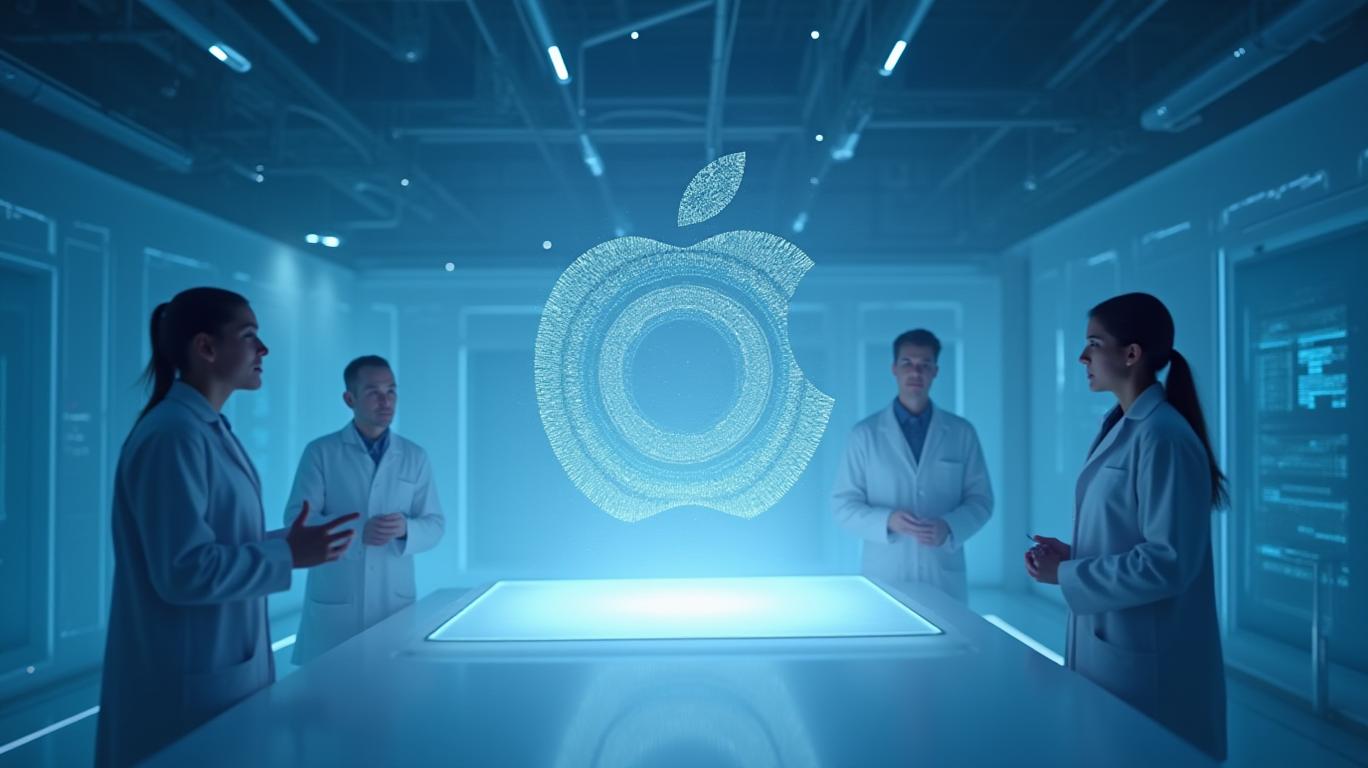The AI Hardware Revolution: How OpenAI’s Jony Ive Partnership Could Redefine the Tech Landscape
The tech world is on the cusp of a seismic shift. On May 22, 2025, OpenAI announced its $6.5 billion acquisition of Jony Ive’s hardware startup, io—a move that could rewrite the rules of consumer technology. By merging OpenAI’s AI prowess with the legendary design ethos of the man who shaped Apple’s most iconic products, this partnership signals a bold leap into a future where AI isn’t just software but a seamless, intuitive companion to humanity. For investors, this is more than a headline: it’s a blueprint for dominating the next era of tech.

Vertical Integration: The Key to AI Dominance
OpenAI’s acquisition of io is a masterstroke of vertical integration. Historically, tech giants like
and Google have built ecosystems by controlling software (iOS/Android) and hardware (iPhone/Pixel). But OpenAI is now doing something far more ambitious: creating an entirely new category of AI-native hardware that bypasses traditional screens and interfaces. By owning both the AI models (ChatGPT, GPT-5) and the hardware design (courtesy of Ive’s team), OpenAI is positioning itself to lock users into an end-to-end experience that no other company can match.The first-mover advantage here is staggering. The 2026 launch of screen-free, context-aware devices—described as “third core companions” to smartphones and laptops—will challenge Apple’s dominance in both hardware and user experience. already hint at investor unease. Meanwhile, OpenAI’s integration could create a flywheel effect: better hardware drives more user data, refining AI models, which in turn attract more users to the ecosystem.
Design as Disruption
Jony Ive’s influence cannot be overstated. His team’s focus on simplicity, elegance, and emotional resonance—principles that made the iPhone revolutionary—now aims to redefine human-AI interaction. The prototype, reportedly “captured” by Ive’s imagination, promises devices that feel like “companions,” not tools. This shift from utility to companionship is no small feat. It taps into a growing consumer desire for technology that adapts to context, anticipates needs, and even understands emotion.
The design philosophy here is a direct rebuttal to Apple’s current struggles. While Apple’s AI efforts lag, OpenAI’s vertical stack could make its devices the default interface for ambient AI—a market Gartner estimates will hit $644 billion. Imagine a device that knows your schedule, location, and even tone of voice, offering proactive assistance without requiring you to “ask.” This isn’t just hardware; it’s a new paradigm for living with technology.
Why Investors Should Bet on This Ecosystem
The implications for investors are clear: OpenAI’s vertical integration creates a moat around its AI hardware ambitions. Competitors like Google and Meta lack both the design acumen of LoveFrom and the AI leadership of OpenAI. Meanwhile, the $6.5 billion acquisition—paid in equity—ensures OpenAI retains its financial flexibility while aligning io’s team with its mission.
But how do you play this? Invest in AI/ML hardware plays and OpenAI partners now, before the market catches up. Companies with expertise in:
- AI-native device design (e.g., firms collaborating with OpenAI’s new hardware team).
- Sensor technologies (context-aware hardware relies on advanced vision, audio, and motion sensors).
- Ambient computing infrastructure (data centers optimized for real-time AI processing).
The first-mover advantage here is critical. Just as Apple’s iPhone ecosystem locked in users through its software-hardware synergy, OpenAI’s AI-native devices could do the same—only this time, the “software” is an adaptive, learning AI that evolves with you.
Risks, but the Upside Outweighs Them
Critics will point to execution risks: Humane’s stumble in AI devices (acquired by HP in 2024) and the high valuation of pre-revenue io. Yet OpenAI’s track record with GPT models, paired with Ive’s design pedigree, suggests this isn’t a gamble—it’s a calculated bet on a team that’s already disrupted software and design individually.
Conclusion: The Next Tech Giant Is Being Built Now
OpenAI’s move with Jony Ive’s io is more than a hardware play—it’s a declaration of intent to control the future of human-AI interaction. With vertical integration, a visionary design team, and a first-mover window into the $644 billion genAI market, this partnership is a catalyst for a new ecosystem.
For investors, the message is clear: act now. The companies that align with OpenAI’s vision—or build the hardware, sensors, and infrastructure enabling it—will be the winners of the next decade. The next trillion-dollar opportunity isn’t in apps or cloud services; it’s in devices that think, learn, and feel alongside us. This is how tech revolutions begin—and end.
This article is an opinion piece. Past performance does not guarantee future results. Always conduct your own research before making investment decisions.

Comments
No comments yet